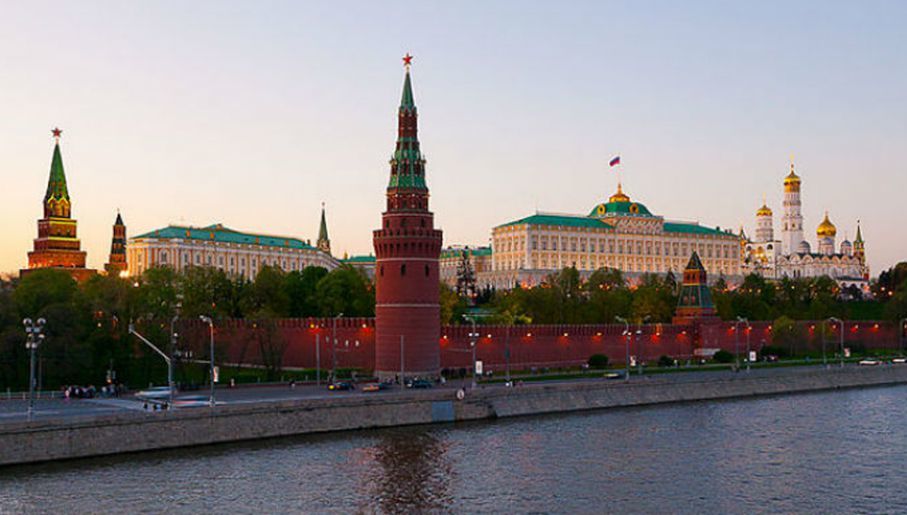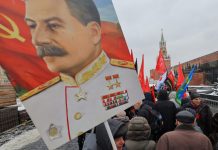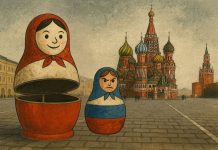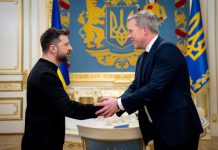
By Kseniya Kirillova, for EU Today
In the middle of November British critics accused a famous Russian cartoon “Masha and the Bear” of pushing “Kremlin’s propaganda”. Specifically, The Times refers to the Buckingham University professor Anthony Glees, who specialises in studying the work of intelligence agencies. According to the expert’s opinion, “Masha has a stubborn and unpleasant personality, but at the same time she is strong-minded. She bites off more than she can chew. It would not be an exaggeration to compare her to Putin,” writes Kseniya Kirillova.
In addition, British analysts got wary of the episodes where Masha in the uniform cap of the Soviet border guard was protecting rows of carrots; in this they saw a metaphor for Russia protecting its own borders. Speaking of which, in May of previous year, a teacher from Tallin’s university Priit Hybemyagi noted that the cartoon series “Masha and the Bear” demonstrates the use of “soft power” by the Russian military. In a recent interview with Radio Liberty he mentioned that the goal of this cartoon is to change Russia’s image from negative to positive, and that it’s dangerous since children, growing up, won’t be able to adequately perceive threats coming out from Russia.

In turn, Russia has laughed off such claims, calling them “russophobia beyond limit” and “tilting at windmills”. Nevertheless, some Russian publicists also agreed with British experts’ evaluation. For example, a famous journalist and blogger Arkadiy Babchenko called “Masha and the Bear” propaganda, not just because of the “semi-NKVD uniform cap”, but also because of the model of behavior it represents, according to him.
“Hysteria and shrieks, shrieks and hysteria. Drooling spit with raised voice and screaming, screaming, screaming. Absolute inability to listen to others, total disrespect of others, shouting as the only model of communication, utterly pig-headed confidence in her own correctness, absolute inability to listen and hear arguments… The Times, you understood it all correctly. And you, colleagues from Finland, Estonia, and Lithuania. This indeed is propaganda. Propaganda of idiotism, hysteria, and aggressive behavior.” he reckons.
This isn’t the first time Russian cinema has caused concern in the West. In Ukraine, as we remember, not only numerous Russian movies but even songs were banned. However, in order to understand whether contemporary Russian cartoons are destructive propaganda, we need to first understand at least two things: terminology and context.
The fact is that to call contemporary Russian informational politics just “propaganda” isn’t fully correct. Propaganda, or promotion of a country, its values, views and lifestyle has been produced by many countries. For example, they have opened archives of the American CIA of the Сold War period, in which, among other operations, propaganda ops are also present.
However, today’s Russian media include not just propaganda in traditional sense as it’s understood by the West. Its work in large part represents “information operations”, which are an integral part of the so-called “active measures” of Russian clandestine services. This includes the spread of deliberate lies and slander aimed at the destruction of other countries, disruption of trust in their institutions, interference into their internal affairs, creation of destabilisation, chaos, division, and animosity in Western society. Often these operations are conducted “under a foreign flag”, with the involvement of the most destructive segments of western society, such as extremist and fascist groups.

These operations significantly differ in their established goals and methods from the Western propaganda which sets a goal of supporting democratic values, citizens’ institutions and discovery of the truth, which authoritarian regimes hide from people, but which indeed promotes a more effective development of a country and society. “Informational operations” however do not hide the fact that their goal is to conduct “information war” against the West, and that they establish exclusively destructive tasks. For example, according to the US Department of Justice’s indictment against “Prigozhin’s accountant” Elena Chusyainova, the Russians have called interference into American elections “the information warfare against the US”.
Thus, Russian propaganda in broad sense includes in itself both propaganda, i.e. the promotion of Russia’s positive image, as well as informational operations. All of this is interwoven in the process of “hybrid warfare” so much that at times it’s virtually impossible to tell where one ends and the other begins. However, for simplicity sake, Russian informational operations are dubbed with “propaganda” term, which is what adds confusion reaching comical proportions.
Russian cartoons certainly present the propaganda of positive image of Russia as a country; however, they can hardly be called “active measures”. They don’t contain material that’s able to lead to destruction of another state or justification of Russian aggression, i.e. of the level of destructivity that’s inherent in “informational operations.” That’s precisely why any efforts to find traces of such operations in them look so comical sometimes. This is more likely a kind of “direct propaganda” of certain images, including Russian law enforcement structures.
In fact, images meant as propaganda of Russian law enforcement have infused even the innocent and talented, and thus initially popular cartoons for years. You can trace these metaphors especially clearly in an example or popular cartoons about “Three heroes (Strongmen).” If at the beginning they appeared as entertainment, and even included the elements of political satire about a stingy prince and awkward warriors, then in later series, hints about the law enforcement became more and more transparent. “Strongmen” more often alluded to the fact that their job represents “state secret”, more and more often aggressive jokes about America appear in the series, not justified by anything in the plot, and the lexicon of the “Strongmen” more and more resembles sharpened lines from “Boshirov and Petrov”. The “Paratrooper Stepochkin” cartoon is, for example, openly dedicated to propaganda about service in the army, and once again, in its 2nd series, discrediting of America.
On the other hand, in cultures of majority of countries there are many movies and cartoons which in one way or another are supposed to create positive attitude about those countries and about their law enforcement. In the US they release perhaps no fewer shows about the FBI than in Russia about “chekists.” Hollywood movies include Russian villains, while American superheroes are, without exception, very patriotic. So, now here we move onto another important moment – the context. Russia, because of its aggressive politics, is perceived by majority of Western countries as a hostile state, and in this context even a “direct” and relatively innocent propaganda of various forms is perceived negatively.
As a matter of fact, for Ukraine, Russia is a direct aggressor, for Baltic countries is a potential aggressor, and for more distant Western countries – a state that wages disruptive actions towards them, and by the most dirty methods possible. Creating a positive image of the army or rulers of a hostile state differs greatly from institutional propaganda of friendly or neutral country. If we remember that Russian culture is most tightly connected with propaganda, and propaganda with “informational operations”, the Western expert’s concerns become ever more understandable.
Therefore, in conclusion, we can say that by themselves, majority of Russian cartoons carry no more propaganda ammunition than Western movies and cartoons. However, placed in the context of Russian aggression and “active measures”, they undeniably are taken by the West as part of the total threat, and Russia can only blame itself for this. As the Russian publicist Alexander Morozov justifiably noted, “everything created under Putin will be toxic”.
By Kseniya Kirillova, for EU Today
Kseniya Kirillova is a Russian journalist focussing on analysing Russian society, political processes in modern Russia, and the current Russian-Ukrainian conflict. She writes for Radio Liberty and other outlets and is an expert of the Ukrainian Centre for Army, Сonversion, and Disarmament studies.




